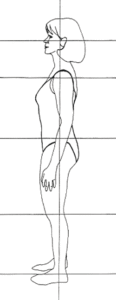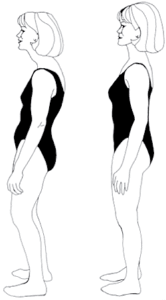What Is A Posture Assessment?
A postural assessment looks at the alignment of body from the front, back and side to see whether there are any imbalances or any muscles that are weak or tight, or for any movement patterns that could be causing pain or discomfort.
It is important to deal with any and all problems as imbalances that aren’t dealt with could go on to cause pain, which could stop you reaching peak performance or potentially lead to an injury.
Being ache and pain free takes personal effort and commitment. It doesn’t come in the form of a pill, a brace or in specially designed mattresses or chairs. They are quick and easy, but don’t address the cause they just make the symptoms less severe.
The best way to deal with posture is through exercises, stretches, and small lifestyle changes. As with most things in the world of health and fitness, a one size fits all plan just doesn’t work so specifically designed programmes are absolutely necessary. A posture assessment is the first step on this road to recovery.
Postural Alignment: Normal VS Abnormal Posture
 When somebody has a normal or ‘ideal’ posture, the body and muscles are balanced, front to back and left to right. With good posture, the body is aligned with one joint neatly stacked one joint above of the other. This can be shown by looking at the body from the side and imagining a line that drops straight from the earlobe to the top of the shoulder, down through the hip joint and knee then through the middle of the ankle joint.
When somebody has a normal or ‘ideal’ posture, the body and muscles are balanced, front to back and left to right. With good posture, the body is aligned with one joint neatly stacked one joint above of the other. This can be shown by looking at the body from the side and imagining a line that drops straight from the earlobe to the top of the shoulder, down through the hip joint and knee then through the middle of the ankle joint.
If the muscles are out of balance or alignment, at minimum, this can cause aches but it could ultimately, if untreated, result physical pain and physical disruption
To assess your own posture, stand sideways in front of a full length mirror or have a friend take a side view picture of you.
What Happens During Posture Assessment?
How long does it take? It only takes around 15 minutes to carry out this simple assessment.
The whole process is really easy, all you need to do is stand upright in your natural posture, position your feet roughly shoulder width apart and hold your arms by your sides. Your muscles and body shape needs to be visible. So ideally wear tight-fitting clothing, gym clothes are best and you will need to take your shoes off.
I usually start by looking at the side view, then the front and back.
A few items that we look for:

- Does your head push forward or does it sit nicely on top of your shoulders?
- Is your upper back hunched forward in a rounded curve?
- Do your shoulders round forward?
- Are your shoulders level with each other or is one higher than the other?
- Are your hands by the side of your thighs, or do you hold them more towards the front of your thighs?
- Is your abdomen protruding forward into a potbelly?
- Is your lower back arched forward too much?
- Are your knees locked back straight?
- Do your feet point straight forward or point outwards?
Typically, someone with good or normal posture will have, when viewed from the side, their ears, shoulders, hips, knees, and ankles all aligned one above the other.
If any of the above are out of alignment it would indicate you could gain a lot by improving your posture.
Don’t be discouraged. No matter how bad you think your posture is or how long you’ve had poor posture, it is NEVER too late. You CAN improve your posture and you can start right NOW!

